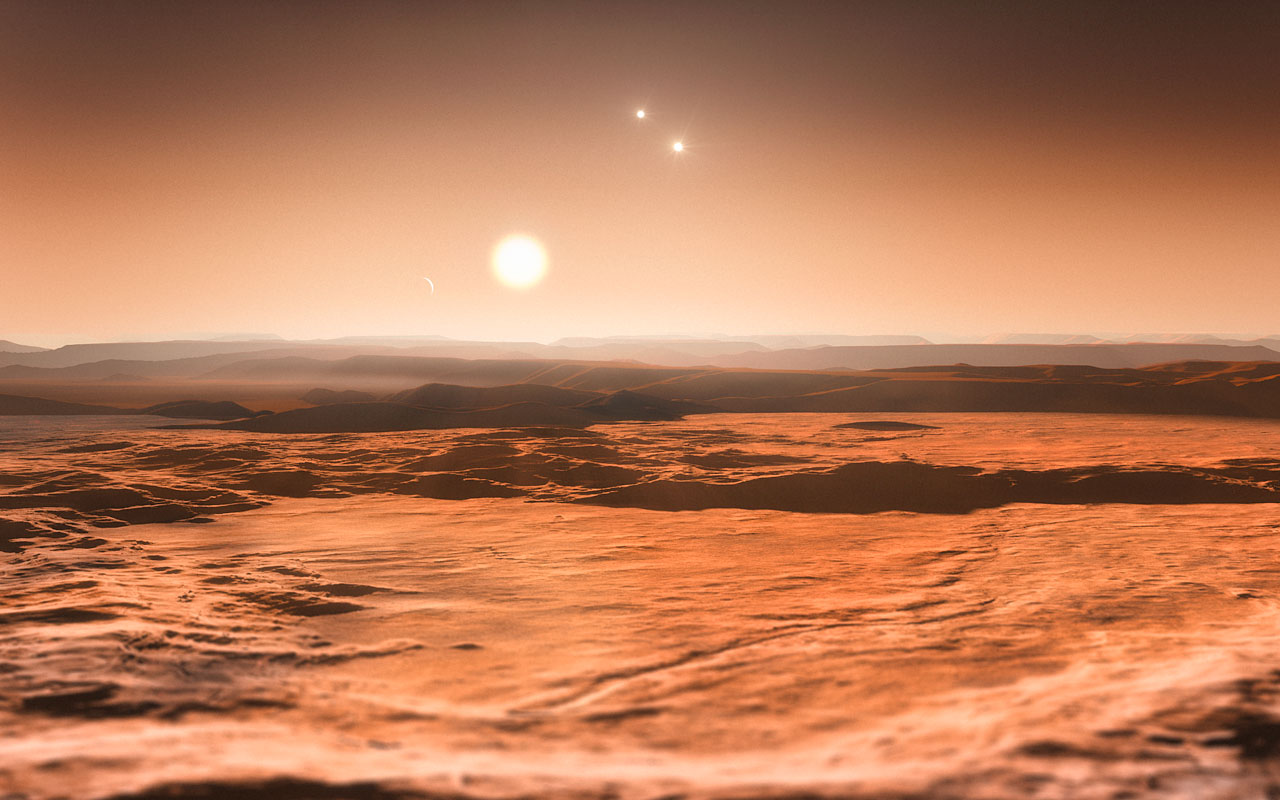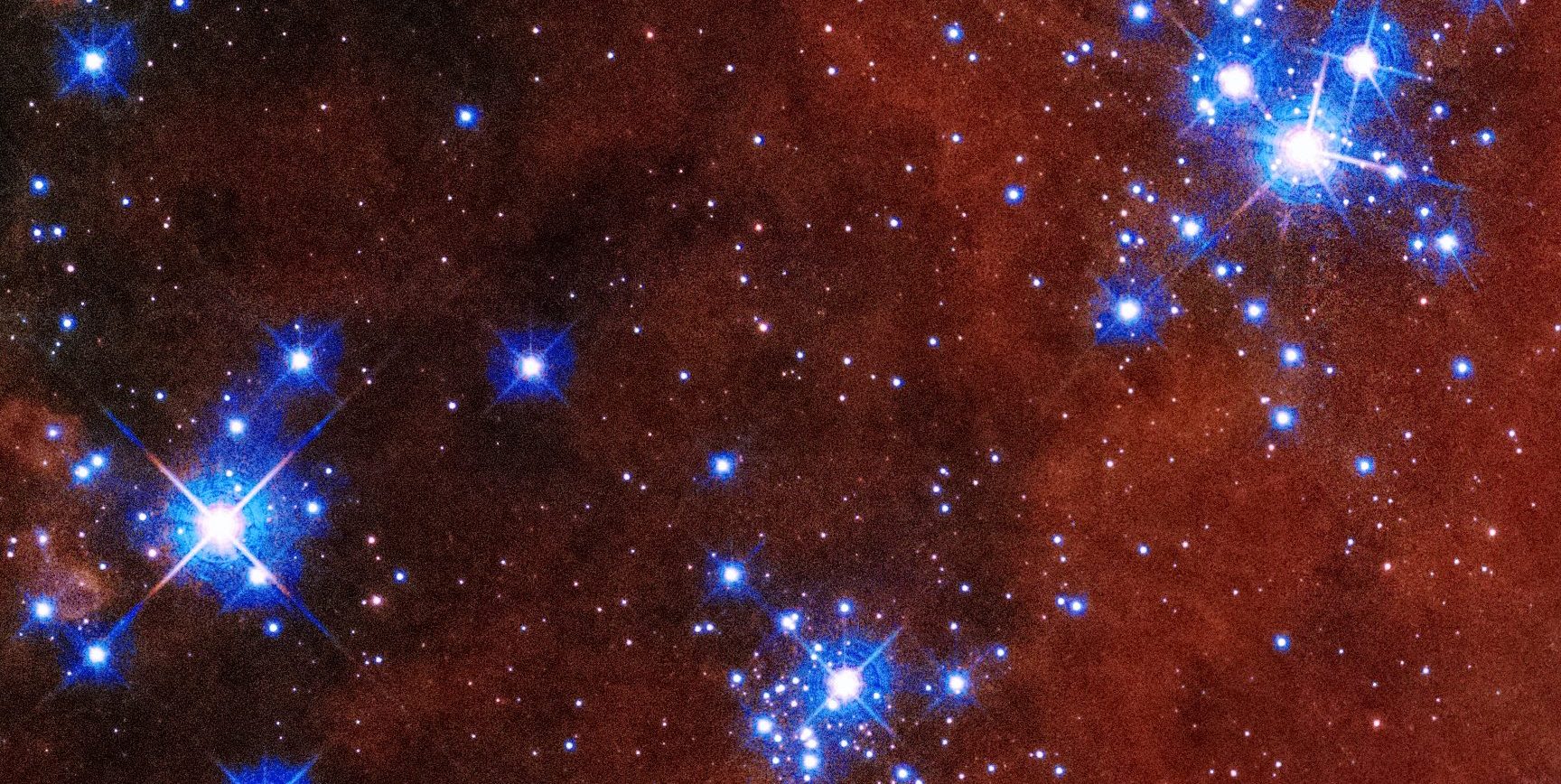The hunt for life in Alpha Centauri

- Our neighboring solar system is an odd one by any measure. It’s a triple system consisting of Alpha Centauri A and B and Proxima Centauri.
- At a distance of 4.2 light-years, this is the closest star system to Earth.
- A couple of planets might host life in Alpha Centauri, but we’ll probably have to go there to find out for sure.
Our neighboring solar system is an odd one by any measure. It’s a triple system consisting of Alpha Centauri A, which is about 10% more massive than our Sun and 50% more luminous, and Alpha Centauri B, which is just the opposite, 10% less massive and 50% dimmer. Those two stars orbit a common center of gravity, while the third star in the system, Proxima Centauri, is a faint red dwarf (M star) about 0.2 light-years away from the others.
They may be oddballs, but these stars have special interest to us, being the closest of the estimated 100 billion suns in our galaxy. Proxima Centauri is the nearest of the three to Earth, at a distance of 4.2 light-years. It has two confirmed planets, including one in the habitable zone, defined as the distance from a star at which you could expect temperatures on a planetary surface consistent with the presence of liquid water.
The other two stars in the system are believed to have planets, although they have not been confirmed. (A possible Neptune-size planet was reported in 2021 orbiting Alpha Centauri A at roughly the same distance as Earth orbits the Sun, but this could turn out to be a dust cloud instead.) The apparent lack of any brown dwarfs or gas giants close to Alpha Centauri A and B make the likelihood of terrestrial planets greater than it would be otherwise, at least in theory. The chances of a rocky, potentially habitable planet in our neighboring solar system might therefore be as high as 75%.
All this puts the Alpha Centauri system high on everyone’s list of places to look for extraterrestrial life. (Toward that end, the Breakthrough Foundation has provided early funding for the TOLIMAN space telescope program, which has the goal of discovering additional possibly habitable planets in the Alpha Centauri system. The current Phase 2 of the project — which has no officially announced launch date — includes the design, build, and integration of a spacecraft with the telescope.)
Is there life in Alpha Centauri?
As for the planet we have already found, Proxima b created a lot of buzz after its detection in 2016 because it is a bit larger than Earth (at least 17% more mass) and, crucially, is in the habitable zone. That alone does not give us enough information to say whether the planet actually is habitable, though. Proxima b orbits very close to its M dwarf sun, and thus may be tidally locked, meaning it always shows the same side to the star. That isn’t good for life, because one side would remain scorching hot and the other icy cold.
It has been hypothesized that life could still survive on such a world, because the borderlands between the two hemispheres might offer benign temperatures. I consider this unlikely, because the temperate zone would be small and prone to extreme weather patterns. And there are other reasons to be less than optimistic about life on Proxima b. Like other red dwarfs, Proxima Centauri emits strong solar flares and X-ray emissions that would be a challenge for any life forms on a world 20 times closer to its star than Earth is to the Sun. A magnetic field might offer protection, but we don’t know if Proxima b has one.
Nor do we know if there is any water there. Both those requirements have to be met for a thriving biosphere, along with the availability of organic compounds and the presence of an effective mechanism for recycling nutrients (for example, plate tectonics). In other words, just residing in the habitable zone is not enough for a world to foster life. Our Moon is also in a habitable zone but couldn’t be more barren. And life might exist in the subsurface oceans of the icy moons Europa and Enceladus, which are well outside the Sun’s habitable zone.
What about the Neptune-size planet around Alpha Centauri A? Assuming it is eventually confirmed, its size suggests that it may be more like the uninhabitable gas giants of our own Solar System. Most scientists set the boundary between rocky and gaseous planets somewhere between 1.5 to 3 Earth masses. The world around Alpha Centauri A appears to be between five and seven times the mass of Earth, so it is probably a gas giant.
But we do not know for certain how massive rocky planets can get. If the planet is rocky in composition, that would be another story. A so-called Super-Earth in the habitable zone of Alpha Centauri could have fascinating implications. A planet of this type in a Mars-like orbit (roughly 1.5 Sun-Earth distances out) could be teeming with life. Today, Mars is only borderline habitable — too small, and with too little internal energy to have kept its original magnetosphere and atmosphere. If Mars had been the size of Earth, or preferably larger, it most likely would have held on to its early oceans and thick atmosphere, making it much more suitable for life. We do not have a rocky planet more massive than Earth in our Solar System, but maybe we will find one in the Alpha Centauri system.
Crawling our way to Alpha Centauri
Unfortunately, we may have to go there to find out. But that may not be as far-fetched as it once seemed. A new kind of propulsion system has just been proposed that theoretically could reach interstellar space in less than five years, carrying a substantial scientific payload. The concept, known as pellet-beam propulsion, has received a NASA study grant for further development.
We have to be realistic, though. Even with a propulsion breakthrough, 4.2 light-years is a really, really long way to go. Patience is called for. But how cool would it be to launch a probe to explore the Centauri system?





